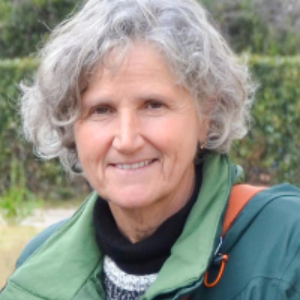Title : New scenarios for crop plants: TiO2 nanoparticles in sludge-amended agricultural soil
Abstract:
Beyond all studies published to date on the effects of nanoparticles (NPs) on living organisms, the overall picture of their possible interactions with crop plants and with food chains are not at all clear.
These emerging contaminants are becoming a worldwide problem, given that nanotechnologies are increasingly gaining ground in all sectors of the economy and innovation, with their consequent unintentional and intentional release into the environment. Poorly estimated is indeed the behavior of nanomaterials (NMs) in the different environmental matrices, especially in agricultural soils. These become a site of possible accumulation of NMs through potentially contaminated surface waters, by the use of plant protection products, and by their amendment with sludge from wastewater treatment plants. The recycle of sludge in agricultural soils is identified as one of the best environmental management practice, due to its increasing amount of production and the supply of organic matter and nutrients to the soil-plant system, but, due to the uncertainty of its contents not thoroughly tested for safety, can result a possible sink of unknown pollutants as well as of NPs. In such complex matrices the bioavailability of the different NMs often is not predictable, due to the tendency of NPs to aggregate, to adsorb/precipitate on solid phase, as well as to be coated by organic molecules.
In order to investigate the environmental impact of TiO2 NPs we have used two different concentrations of the crystal forms of TiO2 (applied singularly or in a mixture as anatase and rutile NPs and as bulk material). The effects were evaluated on growth and development of the crop Pisum sativum L. at microcosm scale under long term exposure, to possibly mime environmental exposure in sludge amended agricultural soil. We were particularly interested in understanding the response elicited by NPs in tissues/organs, at cellular and organism level, taking into account different aspects. Ultrastructural studies demonstrated that the applied NPs were internalized in root cells and synchrotron studies showed that both titanium crystal forms, especially anatase, were taken up and moved to the vascular tissues. Oxidative stress was evaluated by biochemical approach and in situ histochemical techniques. The amended sludge soil was in itself an element of disturbance for plants. The presence of NPs in the sludge-amended soil pronounced oxidative damages in P. sativum, in particular that grown at the lowest NPs concentration. This result was speculatively attributed to a likely easier enter the root of more diluted NPs, having less tendency to form homo- and heteroaggregates in the complex matrix. The most responsiveness treatments seemed those conducted with anatase crystal form, alone or mixed with rutile as well as with the corresponding bulk material. The results of our work pose a reflection on the promising agronomic practices and on the use of nanomaterials and their safety, which must be carefully analyzed, in order to establish right regulation over their use, confinement, and disposal for the environmental protection and living organism health.



